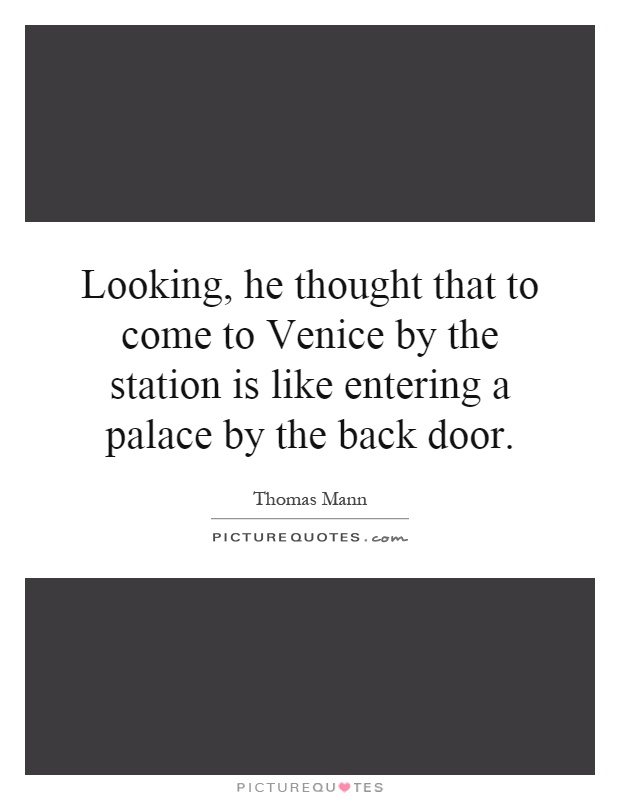Looking, he thought that to come to Venice by the station is like entering a palace by the back door

Looking, he thought that to come to Venice by the station is like entering a palace by the back door
Thomas Mann, a renowned German novelist and essayist, was known for his intricate and detailed descriptions of settings in his works. In his novel "Death in Venice," Mann beautifully captures the essence of Venice through the eyes of his protagonist, Gustav von Aschenbach. The quote "Looking, he thought that to come to Venice by the station is like entering a palace by the back door" perfectly encapsulates the feeling of awe and wonder that Venice evokes in visitors.Venice, with its grand architecture, winding canals, and rich history, has long been a symbol of beauty and decadence. Mann's comparison of arriving in Venice by the station to entering a palace by the back door speaks to the idea that Venice is a place of hidden treasures and unexpected delights. Just as entering a palace through the back door may reveal secret passageways and hidden rooms, arriving in Venice by the station allows visitors to discover the city's hidden charms and unique character.
Mann's use of this metaphor also highlights the contrast between the bustling, modern train station and the timeless beauty of Venice. Aschenbach's arrival in Venice by train serves as a stark reminder of the industrialized world he is leaving behind, while also foreshadowing the transformative experience he will have in the city. Venice, with its labyrinthine streets and mysterious alleys, becomes a metaphor for the inner journey Aschenbach will embark on as he grapples with his own desires and mortality.
Furthermore, Mann's comparison of Venice to a palace reinforces the idea that the city is a place of luxury and opulence. Just as a palace is a symbol of wealth and power, Venice is a place where visitors can indulge in the finer things in life, from exquisite cuisine to world-class art and architecture. By likening Venice to a palace, Mann invites readers to explore the city's grandeur and splendor, while also hinting at the darker undercurrents that lie beneath its glamorous facade.












 Friendship Quotes
Friendship Quotes Love Quotes
Love Quotes Life Quotes
Life Quotes Funny Quotes
Funny Quotes Motivational Quotes
Motivational Quotes Inspirational Quotes
Inspirational Quotes